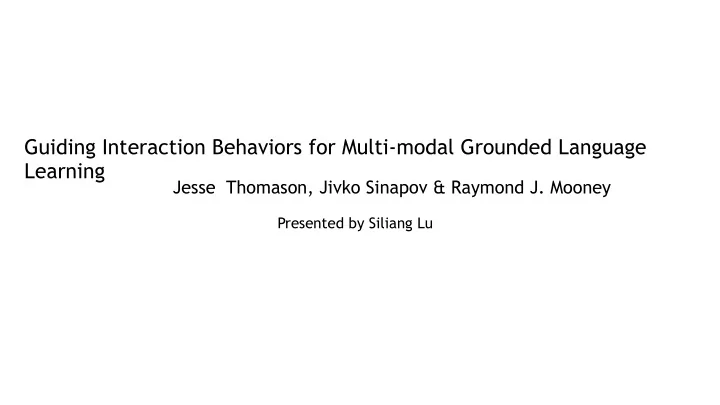

Guiding Interaction Behaviors for Multi-modal Grounded Language Learning Jesse Thomason, Jivko Sinapov & Raymond J. Mooney Presented by Siliang Lu
Multi-modal grounded language learning Multiple modalities Physical properties of objects Language predicates in the world Interaction behaviors Visual predicate Non-visual predicate (i.e. “red”) (i.e. “empty”) Modalities: Audio, Haptics, visual colors and shapes Behaviors: look, drop, grasp, hold, lift, lower, press, push
Classification
Consideration of only validation confidence Method: • SVM using the feature space for each sensorimotor context (a combination of a behavior and sensory modality) Sensorimotor context
Consideration of only validation confidence
Confidence and behavior annotations
Confidence and behavior annotations
Confidence and multi-modality annotations Modalitie s: auditory, haptic, visual color and visual shapes (fpfh)
Sharing confidence between related predicates • Calculating cosine distance in word embedding space by using Word2Vec
Sharing confidence between related predicates i.e. if kappa of “thin, grasp/haptic” is high for the predicate “narrow”, we should trust grasp/haptic sensorimotor context
Results
Results • Adding behavior annotations or modality annotations improves performance over using kappa alone • Sharing kappa information improves recall at the cost of precision • Trade-off due to real world “noise” in specific domains. • i.e. “water” correlated with object weights
Future work • Apply behavior annotations in an embodied dialog agent • Explore other methods of sharing information between predicates such as using a maximally similar neighbor word • i.e. the best neighbor of “narrow” is “thin”
Thanks!
Recommend
More recommend